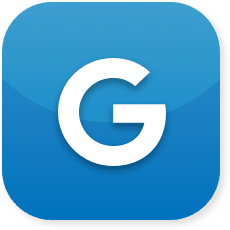Yahoo Gemini Bets On Mobile Search
A recent report showed that app usage and other factors have lead to a staggering change in behavior, with “total activity on smartphones and tablets accounting for an astounding 60 percent of digital media time spent in the U.S.” So it’s no wonder that Yahoo, a flailing entity in some respects, turned its focus to mobile for revenue generation. Still capitalizing on growing trends, Yahoo has also gotten into the native advertising game, a game that eMarketer has forecasted will be worth about $5 billion by 2017. Yahoo has already found native to be effective for its advertisers: “Yahoo says aggregate metrics and case study data demonstrate that native ads dramatically outperform conventional display ads in driving advertiser site visits and follow-up search activity.” So the struggling company places its bets on the two growing trends in the advertising world. So far, it’s paying off.
Enter, Yahoo Gemini
A little over a year ago, in February 2014, Yahoo introduced its Gemini ad platform. It was built in just 45 days by 18 people – a project dubbed “Moneyball.” Described by Yahoo as “the first unified ad marketplace for mobile search and native advertising,” Gemini focuses on giving advertisers a way to advertise both on mobile and through native (with native ads optimized for mobile and tablet usage). Available through Yahoo Ad Manager, the nascent Gemini service allowed Yahoo to expand its offerings on two important growing platforms, mobile and native, without interfering with its ever-important partnership with Microsoft. By the end of 2014, Gemini alone had generated 300 million dollars in revenue for the company.
Gemini Grows
Recent amendments to the relationship between Microsoft and Yahoo will now allow the latter to have a bit more control and reach than before. Where before, Gemini’s ads only showed to a small percentage of people (running on around 1% of mobile and tablet results) due to Bing’s ads for all devices, these changes allow Yahoo to show more ads to more people. Microsoft will be in control of Bing Ads, while Yahoo going forward will continue to serve ads through Gemini. The difference is that Yahoo will have more freedom to serve its own results – both organic and advertising – and controls 49% of desktop traffic to Bing’s 51%. One important fact to note is that Yahoo and Microsoft may terminate their search deal altogether come October 1 or after. This “opt-out” clause gives Yahoo even more room to grow.
With about 575 million active monthly users, Yahoo is up against giant Google and is focusing on its Gemini advertising platform to get its edge. With native ads that are built for mobile, it may not be a bad bet.
How You Can Take Advantage
Gemini offers the ability to have a separate strategy for mobile, increasingly necessary today with the way that users are searching. Here are some important tips for getting started:
- Remember, this is for a mobile audience. Keep your ads short, sweet and to the point – include relevant information as quickly as possible (address, phone number, etc).
- Ad titles should be no more than 50 characters, descriptions no more than 150.
- Your landing page URL should be for a mobile-optimized page that is fast and friendly for the user on the go.
- This goes without saying, but we’ll say it anyway: images for the native advertising portion should be clear and appealing. Here are some important image specifications.
What’s Next for Yahoo Gemini
Here’s what to look out for as Yahoo Gemini progresses:
- “Flurry Personas”: Last summer, Yahoo acquired Flurry Analytics. Now you can use the behavioral and app usage data from Flurry to create audience groups.
- Video, Video, Video – Everyone loves videos, and Yahoo knows it. Look out for expanded video ad options within the Gemini platform, specifically native video and video app install ads.
See anything we missed? Tell us on Facebook!
Recent Posts
You’ve heard it here, you’ve heard it there, you’ve heard it from any SEO agency:…
Every month, our SEO team looks back on the previous months to determine wins, losses,…















